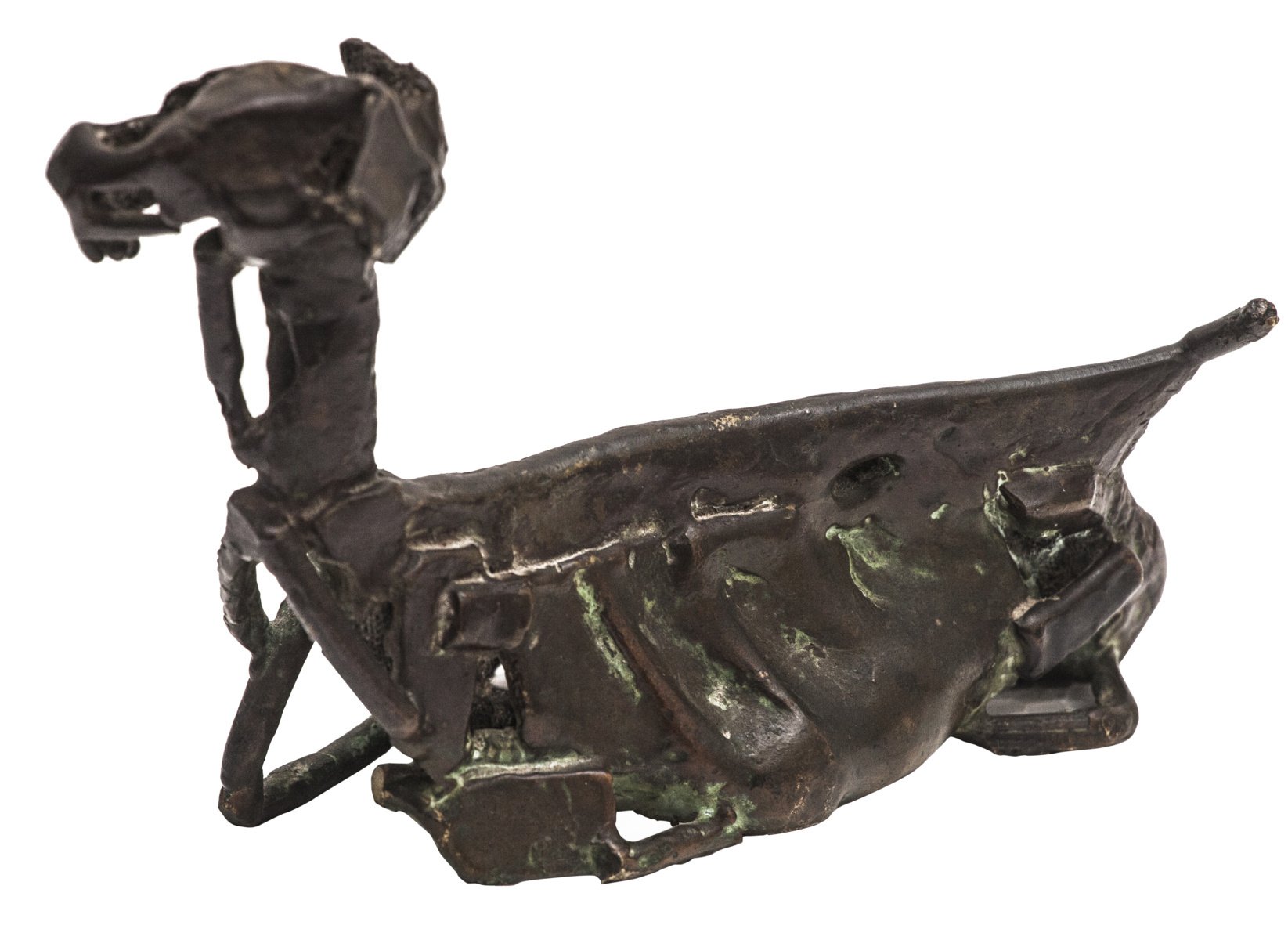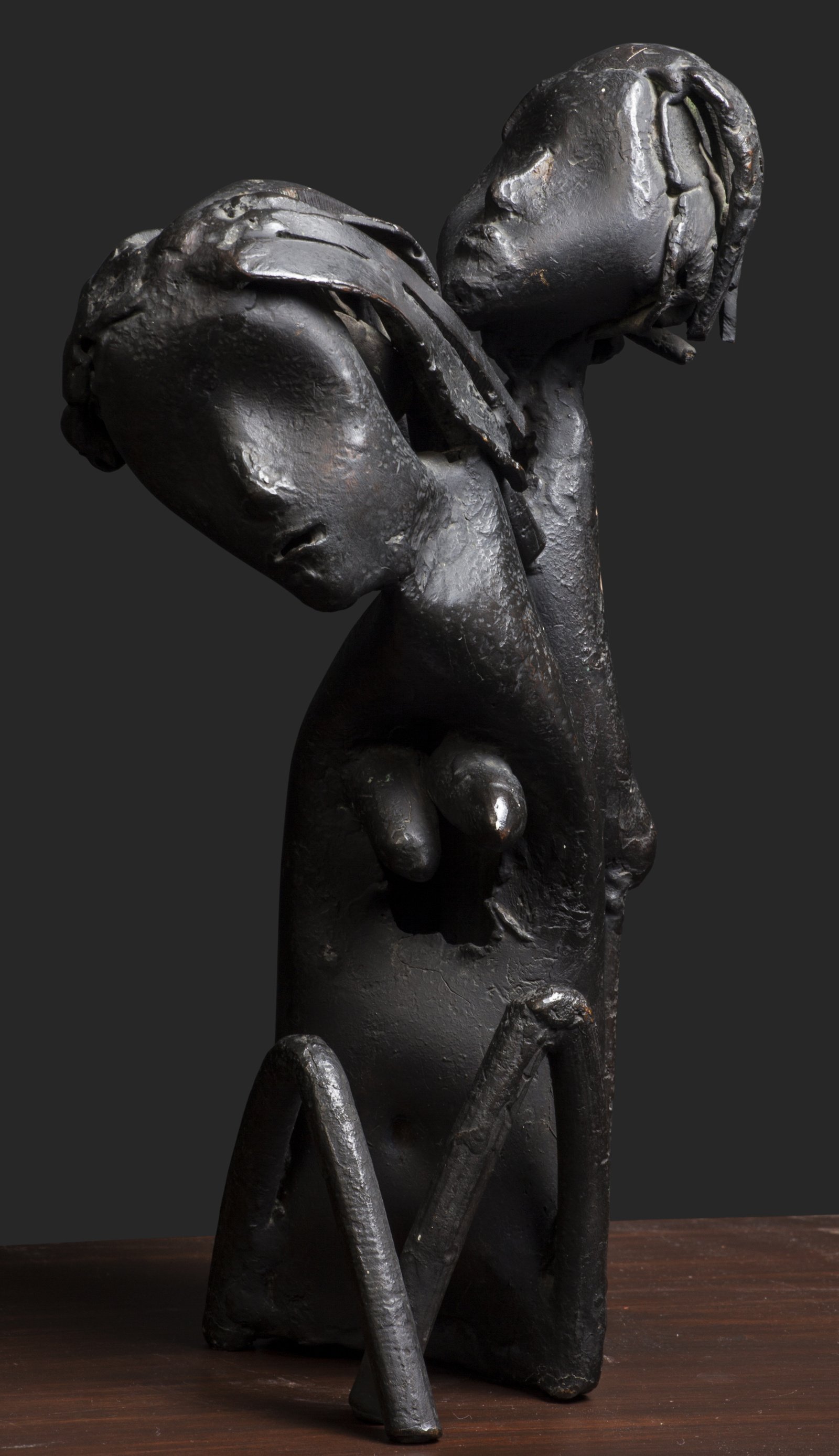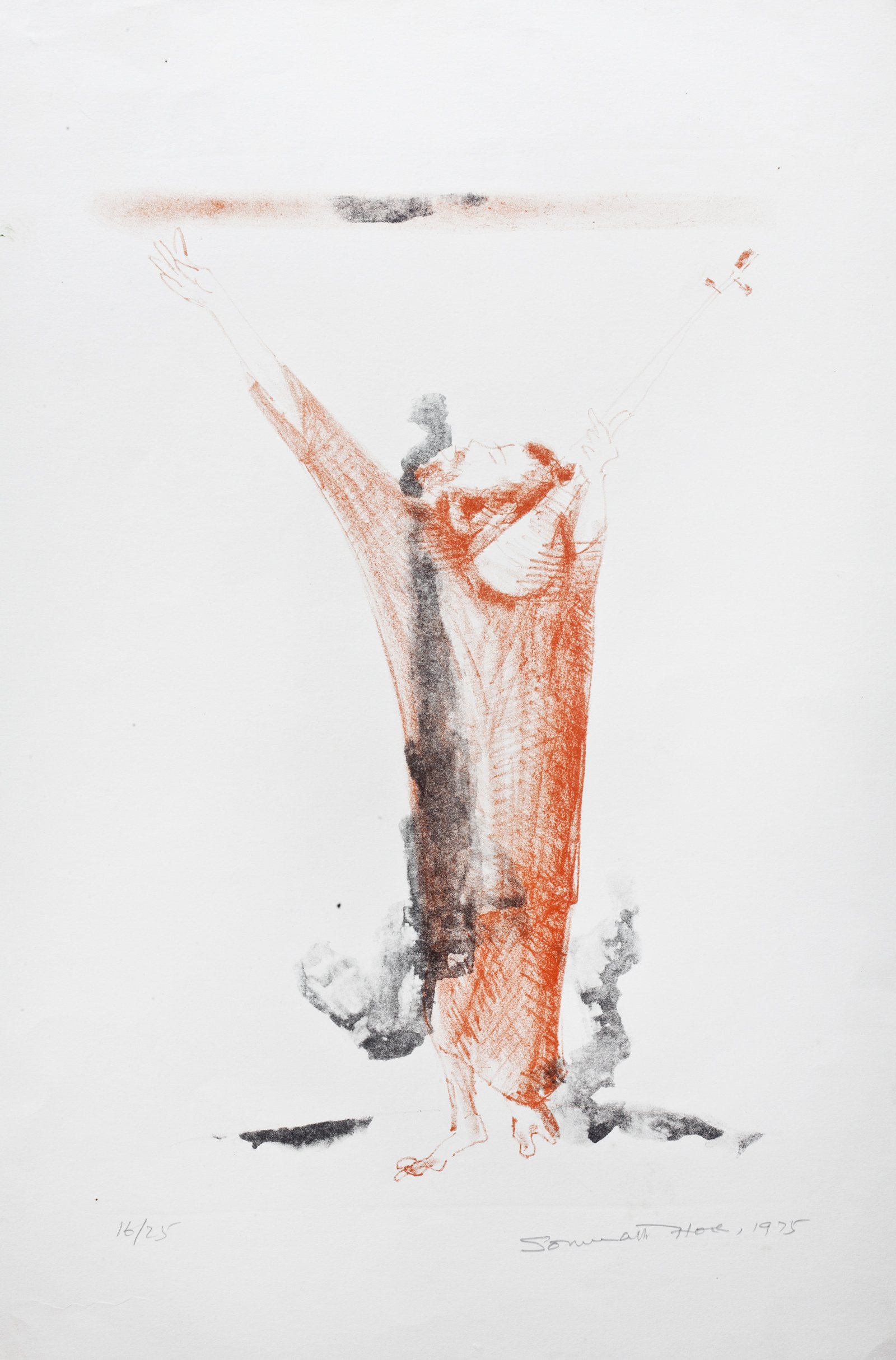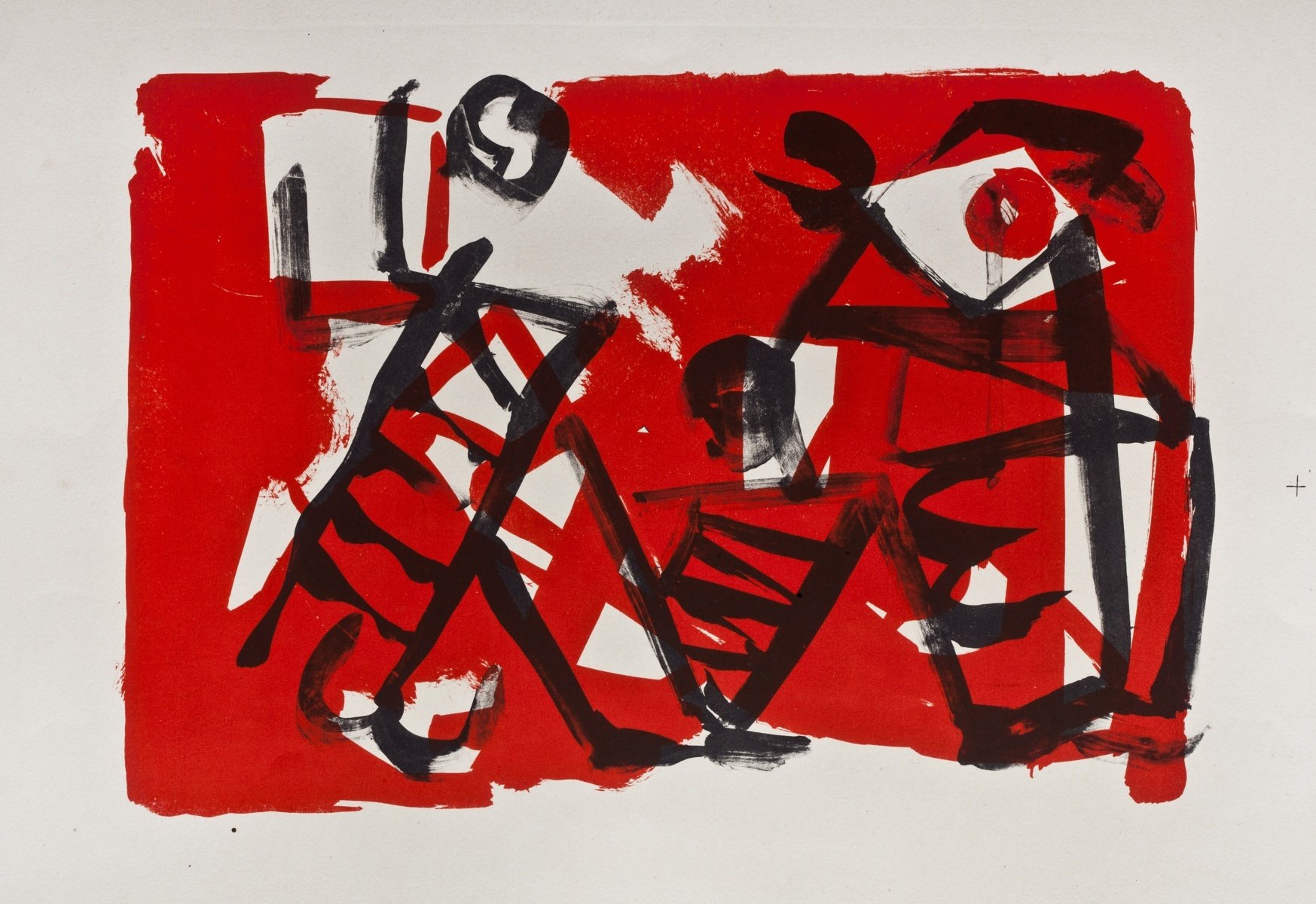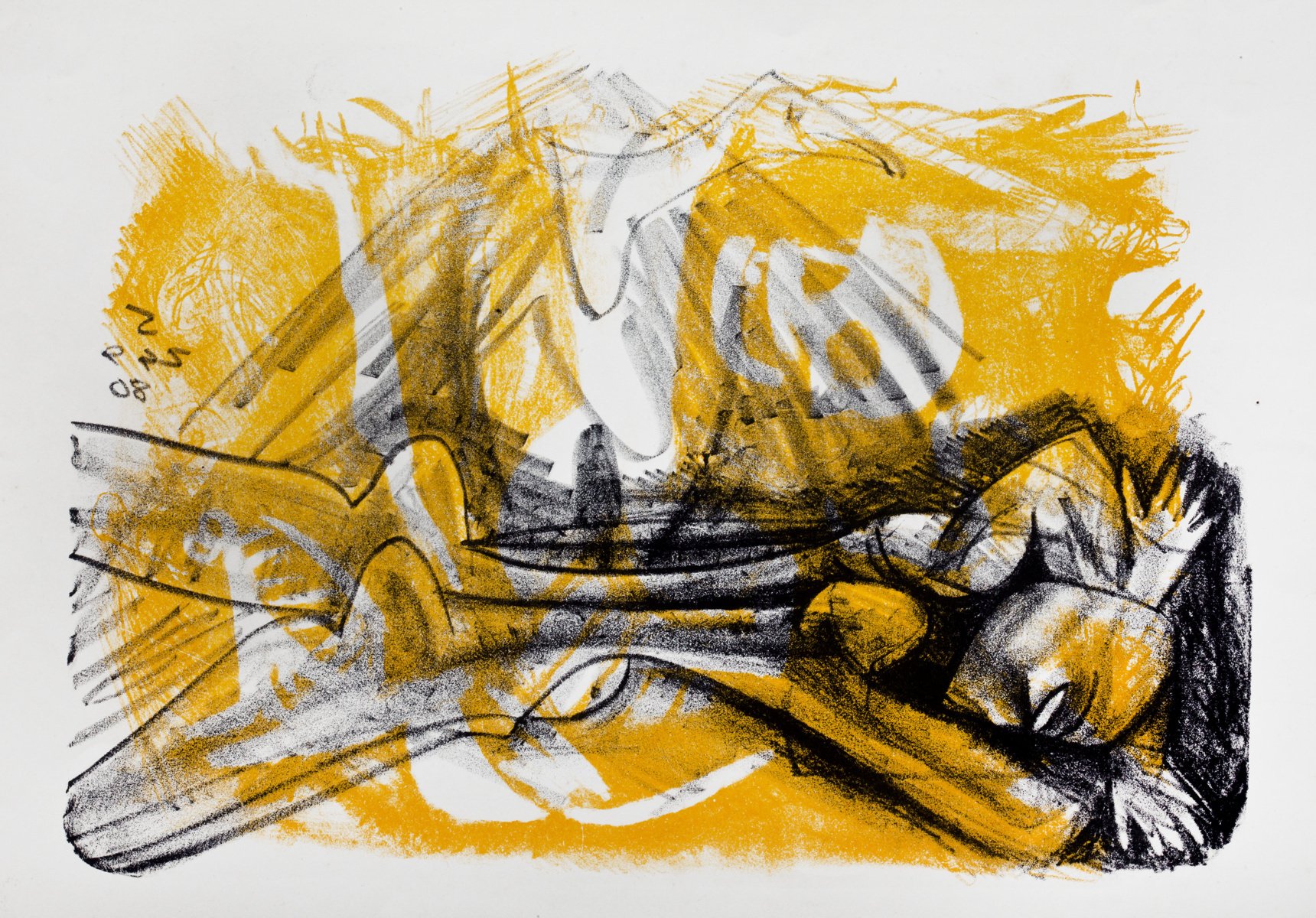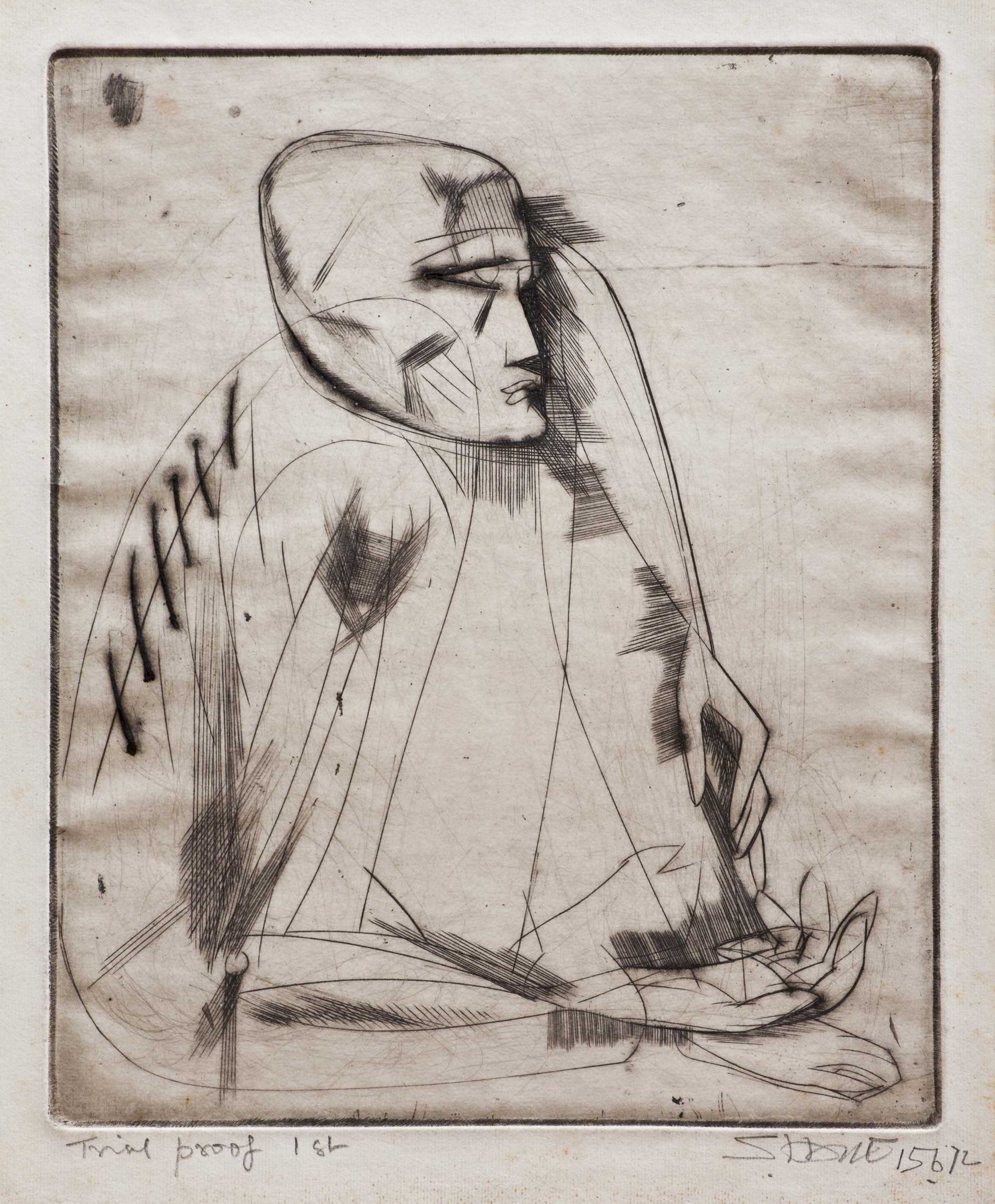
Wounds: Somnath Hore
January 11 - February 20, 2016 at Akar Prakar, Delhi
Somnath Hore’s (1921-2006) paper-pulp prints, of made marks on expansive white space without colour and with occasional wispy touches of reds and/or blacks, are rightly celebrated for perfect symbiosis of personal technology of making and a language that communicates in sensuous terms.
The sparse minimalism of the language is resultant of the intensity of the biogenic feeling transformed into dense on-surface visual explication. By simulating various kinds of wound marks, made by different kinds of weaponary on corporeal bodies, on paper surface starkly, Somnath at the same time intensified the feeling of hurt and extended the meaning potentials of inflicted suffering.
Somnath Hore took his time from around 1968, through wide range of experiments to wed technology of making with visualinguistics, for communication, of dense message of human suffering, resulting from inflicted wound, in visually tactile terms; to which he arrived around 1972, with his white-on white pulp-prints. His journey began with monochromatic lithographs of 1971; with red or black detail-less linear silhouetted figures in tell-tale postures in vast barren spaces. He would soon abandon the planometric surface of the litho-stone, in favour of cut and /or chiselled blocks of wood to pull cameo impressions – to get the feel of cut and /or bruise. But, instead of applying colour on the wood-blocks to get impression of the colour, he made paper-pulp with impregnated reds. The red colour paper pulp would then be spread on the worked wood block. The block with the spread would then get repeated presses and rolls to squeeze out water and be thinned. The bleeding red sheet with impression would then be peeled off and dried. These red cameo prints, on self-made colour–papers, off blocks of cut and bruised wood, led Somnath to making of large blocks of clay, wounding the surfaces with various kinds of tools, for simulating wounds inflicted on living bodies by different kinds of weaponary. For getting the impression of varieties of wound, Somnath would then use paper–pulp; pressed and rolled; the impression receiving surface would then receive details both from the bottom and the top. From sun dried clay tablets to less fragile cement matrice; it was just a shift of convenience. The driving intention was simulation of heightened perception of reality, shorn of details, to densify focus on inflicted suffering.
Pranabranjan Ray
Somnath Hore | Goat | Bronze | 5 x 7 x 3.25 in
Somnath Hore | Boar Hunt | Bronze and Wood | 7.25 x 11 x 9 in
Somnath Hore | Picking Lice | Bronze | 10 x 6 x 3.5 in
Somnath Hore | The Woman and the Beast | Bronze | 11 x 5.5 x 4.5 in
Somnath Hore | Untitled | Pen & ink | 1982 | 14.25 x 10.25 in
Somnath Hore | Untitled | Pen & ink | 1966 | 8.25 x 11.25 in
Somnath Hore | Dogs | Lithographs | 1976 | 7 x 11.25 in
Somnath Hore | Untitled | Pen & ink | 1967 | 8.25 x 11.25 in
Somnath Hore | Untitled | Pen & ink | 1966 | 8.25 x 11.25 in
Somnath Hore | Untitled | Pen & ink | 1967 | 10.25 x 14.25 in
Somnath Hore | Untitled | Pen & ink | 1967 | 10.25 x 14.25 in
Somnath Hore | Untitled | Early pulp print | 1969 | 5.75 x 6.25 in
Somnath Hore | Untitled | Lithograph | 1925 | 15 x 10 in
Somnath Hore | Untitled | Lithograph | 1969 | 9.5 x 12.25 in
Somnath Hore | Untitled | Lithograph | 10 x 14 in
Somnath Hore | Untitled | Lithograph | 1980 | 16 x 11 in
Somnath Hore | Untitled | Stencil on paper | 1968 | 12.5 x 14.75 in
Somnath Hore | Untitled | Stencil on paper | 1965 | 12.25 x 14.75 in
Somnath Hore | Untitled | Woodcut | 1979 | 25 x 20.25 in
Somnath Hore | Untitled | Woodcut | 24.75 x 19.75 in
Somnath Hore | Untitled | Woodcut | 32 x 14.25 in
Somnath Hore | Untitled | Lithograph | 1969 | 11.5 x 15.25 in
Somnath Hore | Untitled | Lithograph | 1969 | 10.5 x 14 in
Somnath Hore | Untitled | Stencil on paper | 1968 | 12.5 x 8.5 in
Somnath Hore | Untitled Trial Proof Ist | 1972 | Etching | 8 x 6.5 in
Somnath Hore | Wounds | Lithograph | 1975 | 10.5 x 12.75 in
Somnath Hore | Untitled | Early pulp print | 5 x 5.75 in
Somnath Hore | Wound 4 | Pulp Print | 1970 | 19.25 x 24 in
Somnath Hore | Untitled | Early Pulp Print | 5.75 x 6.25 in
Somnath Hore (1921 - 2006)
Somnath Hore was born in 1921, Chittagong (now in Bangladesh). He received a diploma in printmaking from the Government College of Art and Craft in Calcutta, while being closely associated with the Communist Party. He went on to carry out visual documentation and reportage of the Bengal famine in 1943 for the Communist Party magazine Jannayuddha (People's War). Socialist ideologies formed around the Tebhaga movement in 1946 in Bengal influenced the early phases of his artistic career. By the 1950s he was regarded as one of the premier printmakers in India and headed the Graphics and Printmaking Department at Kala Bhavana in Santiniketan, after returning from Delhi where he was in charge of the Printmaking Department of the Delhi Polytechnic in 1958.
He showcased his works in numerous national and international exhibitions including the Venice Biennale, Italy in 1962 and the Sao Paolo Biennale, Brazil in 1963 to name a few. The ‘wound series’ that he started making in the late 1960s as a response to the Naxalite movement and the social unrest around the world, was a unique technique of prints on paper pulp. By the mid-1970s, he turned to wax modelling, subsequently which was transferred to bronze. He was awarded the Lalit Kala Ratna Puraskar by Lalit Kala Akademi, New Delhi in 2004. The National Award (Painting) by Lalit Kala Akademi in 1960, the National Award (Graphics) by Lalit Kala Akademi in 1963. He was honoured Professor Emeritus at Kala Bhavana, Santiniketan in 1984. In the same year, he was awarded the Gagan-Aban award in Kolkata. Somnath Hore passed away in 2006 at the age of 85 in Santiniketan.

